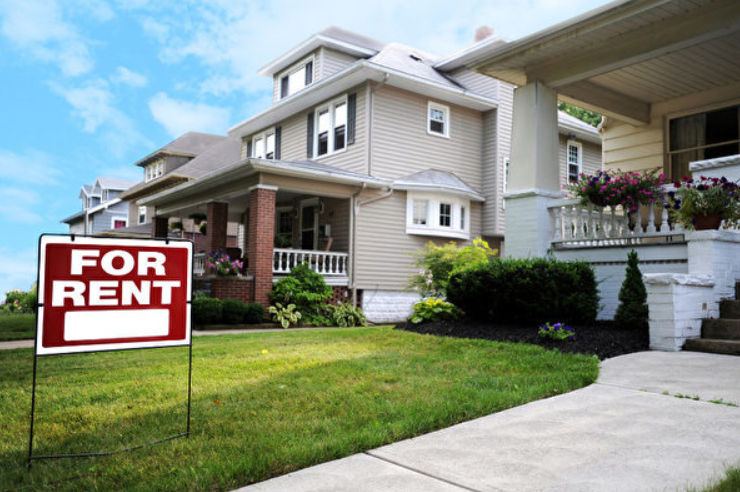Hunting for an affordable rental house doesn’t have to mean compromising on comfort or location. Even in a market where prices feel out of reach, a mix of local insight and strategic planning can help you uncover deals that fit your budget—without endless scrolling on mainstream platforms.
Why Rental Prices Keep Climbing
The U.S. rental market remains tight, with Zillow Research’s 2024 data showing the national median rent for a one-bedroom home hit $1,725—up 22% from 2022. Three key factors drive this trend: a housing supply gap (Harvard Joint Center for Housing Studies estimates a shortage of 4.3 million units), rising material costs that slow new construction, and the rise of remote work, which has pushed demand for larger homes in smaller cities and towns (often called “secondary markets”).
But affordable options aren’t just in small towns—they’re hidden in every area, from suburban neighborhoods to urban fringes. The trick is knowing where to look, and how to approach landlords directly.
Ditch National Portals—Focus on Local Networks
Big platforms like Apartments.com and Realtor.com are useful for market research, but they’re not where the best deals live. Most independent landlords skip these sites to avoid high listing fees (often \(50–\)200 per listing) and instead rely on local channels. Here’s where to prioritize:
- Neighborhood Forums & Apps: Platforms like Nextdoor (filter by “For Rent” and “local only”) and neighborhood-specific Reddit communities (e.g., r/KansasCityHousing) often feature listings from landlords who live nearby. For example, in Kansas City, Missouri, local Reddit groups regularly post 3-bedroom homes for \(1,100–\)1,300—far below the $1,550 median on national sites.
- Municipal Housing Portals: Many cities (like Portland, Oregon, and Austin, Texas) run free rental boards for local landlords, especially those with properties that qualify for low-income or workforce housing. These listings often come with rent caps and no application fees.
- Local Libraries & Community Centers: Physical bulletin boards at libraries, YMCAs, or senior centers are goldmines for listings from older landlords who prefer offline advertising. These properties often have lower rent and more flexible terms.
Time Your Search for Maximum Savings
Rental demand follows a predictable cycle—and timing your search can slash costs by hundreds. The busiest months are April to July: students move for school, families relocate before the academic year, and new graduates start jobs. During this window, prices can jump 10–15%, per RentHop’s 2024 Off-Peak Report.
The best time to search? September to February. Demand drops as the weather cools, and landlords are more eager to fill vacancies. Rent prices typically fall by 7–11%, and many offer perks like waived application fees, free utility setup, or a “first month half-price” deal. For remote workers, this window is even better—you can schedule viewings during weekdays when landlords have more time to negotiate.
Use Local Mapping Tools to Find Underrated Areas
Rental heatmaps aren’t just for big cities—many local housing authorities and community organizations offer free tools tailored to smaller areas. These tools help you spot neighborhoods where rent is lower but commute times (or amenities) stay reasonable.
Take Seattle, Washington, for example—here’s how rent varies across neighborhoods within a 30-minute drive of downtown:
| Neighborhood | Average Rent (2BR) | Below City Median? | Commute to Downtown |
| Capitol Hill | $2,250 | No | 12 mins |
| South Lake Union | $2,100 | No | 15 mins |
| Kent | $1,200 | Yes | 25 mins |
| Auburn | $1,050 | Yes | 30 mins |
| Federal Way | $1,150 | Yes | 28 mins |
By expanding your search to neighborhoods 20–30 minutes from job centers, you can cut rent by $600+ per month—enough to cover utilities or groceries.
Connect Directly with Landlords (and Negotiate Smart)
Middlemen like property management companies often add fees or mark up rent to cover their costs. Skipping them puts you in direct contact with landlords, who are often willing to bargain. Here’s how:
- Drive “Target Zones”: Pick neighborhoods you can afford, then drive around looking for “For Rent” signs. Jot down phone numbers and call the same day—mention you’re a long-term tenant (if true) and can move in quickly. Independent landlords hate vacancies, so this urgency works in your favor.
- Check Local Tax Records: Use your county’s auditor website (e.g., King County Auditor for Seattle) to find owners of vacant homes (look for “vacant” or “non-occupied” status). Send a short, polite email: “I noticed your home on [Street] is vacant—I’m a responsible renter looking for a long-term lease. Would you consider renting it?” Many landlords jump at this—they avoid listing fees and get a trusted tenant.
- Negotiate for Win-Win Deals: Ask for lower rent if you’re willing to: extend the lease to 18 months, handle small repairs (like painting or gutter cleaning), or pay rent on the 1st of the month (instead of the 5th). Landlords often agree to 6–8% lower rent for these compromises—for a \(1,200 home, that’s \)72–$96 saved monthly.
Make Your Application Unforgettable
Even cheap listings get multiple applications—so you need to stand out. Landlords care most about reliability, so focus on proving you’ll be a low-hassle tenant:
- Build a “Tenant Portfolio”: Include a credit report (aim for 620+—if it’s lower, add a short note explaining why, like “medical bills that’re now paid”), 3 months of pay stubs (showing income 2.5x the rent), and 2 references (past landlords are best—if you’re a first-time renter, use a boss or professor).
- Add a Personal Note: Write a 1-paragraph letter explaining who you are and why you want the home. For example: “I’m a freelance writer who works from home—your quiet neighborhood and backyard would be perfect for my work and my small dog. I’ve never missed a rent payment and always keep properties clean.” This human touch makes you memorable.
- Offer a “Guarantor”: If you’re new to renting or have a lower credit score, ask a family member with good credit to co-sign the lease. This reduces the landlord’s risk and makes them more likely to choose you over other applicants.
Calculate the “Real Cost” of Rent
A low monthly rent can be misleading if hidden costs pile up. Before signing, add up these expenses to avoid budget shocks:
- Utilities: Ask the landlord for 3 months of past bills (electric, gas, water, internet). Older homes might have $300+/month heating bills in winter—newer ones could be half that.
- Extra Fees: Some landlords charge “amenity fees” (for things like trash or parking) or “lease renewal fees” (\(100–\)300/year). Get these in writing before agreeing.
- Commute Costs: A \(900 home 40 miles from work might cost \)400/month in gas and car maintenance, while a \(1,100 home 15 miles away could cost \)150/month. The “cheaper” option might actually be more expensive.
Avoid Rental Scams: Red Flags to Watch For
Scammers target budget renters because they know you’re eager to save. Here are the top warning signs to avoid:
- The landlord says they “can’t show the property in person” (e.g., “I’m out of the country”) but demands a deposit to “hold it.”
- The listing uses generic photos (search the image on Google—if it’s from a real estate site, it’s a scam).
- You’re asked to pay via cash, Venmo, or cryptocurrency (legitimate landlords use checks or official payment portals).
- The rent is 30%+ lower than similar homes in the area (e.g., a 3BR in a \(1,800 neighborhood for \)1,000).
To verify: Search the property address on your local county auditor’s site to confirm the owner, then call the owner directly (don’t use the number in the listing) to ask if they’re renting it. The FTC received 18,000 rental scam complaints in 2024—don’t let this happen to you.
Creative Rental Ideas for Tight Budgets
If renting a whole house is too expensive, these options can cut costs while keeping you comfortable:
- Remote Work House-Hacking: Rent a 2BR home in a small town (where rent is low) and sublet the spare room to another remote worker. For example, a \(1,000 2BR in Boise, Idaho, could cost you \)500/month if you sublet the second room for $500.
- Senior-Landlord Mutual Aid: Many older homeowners rent out a room or guest house to tenants who help with chores (e.g., grocery shopping, lawn care) in exchange for lower rent. Sites like Silvernest connect these tenants and landlords.
- Short-Term to Long-Term Leases: Rent a furnished home for 1–3 months (via platforms like Furnished Finder) while you look for a long-term deal. This lets you test neighborhoods without signing a year-long lease—and some short-term landlords will offer a discount if you extend.
Rent-to-Own: A Viable Option (With Protections)
Rent-to-own agreements let you rent a home with the option to buy it later—great if you want to build equity while saving for a down payment. But they’re not for everyone. Here’s what to know:
- Option Fees: Most agreements require a one-time fee (2–4% of the home’s value) to lock in the purchase price. This fee is usually non-refundable if you don’t buy.
- Rent Credits: A portion of your monthly rent (e.g., \(200/\)1,200) goes toward the down payment. Make sure this is written into the contract—no verbal promises.
- Home Inspections: Always get a professional inspection before signing. If the home has major issues (e.g., a bad roof), you could be on the hook for repairs.
Never sign a rent-to-own contract without a real estate attorney reviewing it—they’ll catch hidden clauses (like “you pay for all repairs”) that could cost you.
Cheap Rent Cities: 2024 Data for One-Bedroom Homes
If you’re flexible on location, these 10 U.S. cities have some of the lowest one-bedroom rents (per 2024 data from Local Housing Authorities and Rent.com):
- Wichita, Kansas – $580
- Springfield, Missouri – $610
- Fort Smith, Arkansas – $630
- Sioux City, Iowa – $645
- Lawton, Oklahoma – $650
- Mansfield, Ohio – $665
- Decatur, Illinois – $675
- Aberdeen, South Dakota – $680
- Grand Island, Nebraska – $690
- Hattiesburg, Mississippi – $700
Conclusion
Finding an affordable rental house is about being proactive, not just patient. By focusing on local networks, timing your search right, and negotiating directly with landlords, you can avoid overpaying—even in competitive markets. Don’t forget to calculate the real cost of rent, build a strong application, and watch for scams.
Whether you’re a recent grad, a remote worker, or a family on a budget, the right home at the right price is out there. It just takes a little know-how to find it.



